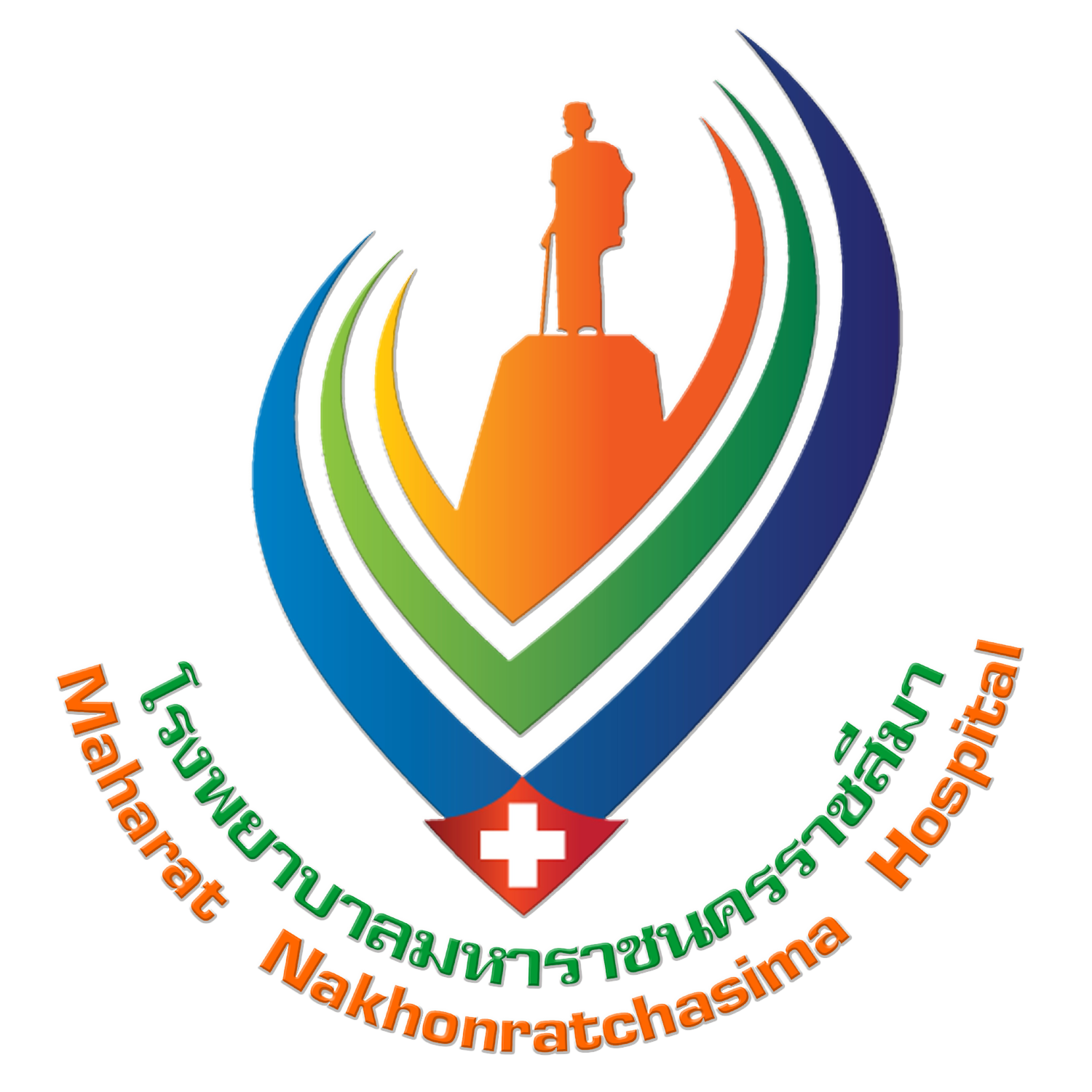การศึกษาปัจจัยที่ส่งผลต่ออัตราการเสียชีวิตในโรงพยาบาลของผู้ป่วยข้อสะโพกหักที่อายุมากกว่า 80 ปี
Main Article Content
บทคัดย่อ
ปัจจุบันสังคมไทยได้เข้าสู่สังคมผู้สูงอายุโดยสมบูรณ์แล้ว จึงทำให้พบปัญหากระดูกสะโพกหักในผู้สูงอายุเพิ่มมากขึ้น การดูแลผู้ป่วยกลุ่มนี้มีความซับซ้อน โดยเฉพาะผู้ป่วยกลุ่มอายุมากกว่า 80 ปี ซึ่งมีความเสี่ยงสูงที่จะเกิดภาวะแทรกซ้อนและการเสียชีวิตระหว่างการรักษาในโรงพยาบาล การศึกษานี้จึงมี วัตถุประสงค์ ที่จะรายงานความชุกของการเสียชีวิตและปัจจัยที่ส่งผลต่อการเสียชีวิตในโรงพยาบาลของผู้ป่วยกระดูกสะโพกหักที่มีอายุมากกว่า 80 ปี รูปแบบการวิจัย เป็นการศึกษาแบบย้อนหลัง โดยวิเคราะห์ข้อมูลจากฐานข้อมูลผู้ป่วยกระดูกสะโพกหักในผู้สูงอายุที่เข้ารับการรักษา
ณ โรงพยาบาลมหาราชนครราชสีมา ตั้งแต่เดือนมกราคม พ.ศ. 2563 ถึงธันวาคม พ.ศ. 2564 โดยศึกษาปัจจัยต่างๆ
ในผู้ป่วยกระดูกสะโพกหักกลุ่มอายุ 80 ปีขึ้นไป และวิเคราะห์ข้อมูลทางสถิติเพื่อเปรียบเทียบปัจจัยที่แตกต่างกันระหว่างกลุ่มที่เสียชีวิตในโรงพยาบาลและกลุ่มที่ไม่เสียชีวิต ผลการศึกษา จากฐานข้อมูลผู้ป่วยกระดูกสะโพกหักในผู้สูงอายุ
มีผู้ป่วยกระดูกสะโพกหักอายุมากกว่า 80 ปี ที่เข้าเกณฑ์การศึกษาจำนวน 435 ราย โดยมีผู้ป่วยเสียชีวิตระหว่าง
การรักษาในโรงพยาบาล 24 ราย คิดเป็นร้อยละ 5.52 ปัจจัยที่สัมพันธ์กับการเสียชีวิตในโรงพยาบาลของผู้ป่วยกลุ่มนี้ ได้แก่ ภาวะไตทำงานบกพร่อง โดยผู้ป่วยที่เสียชีวิตมีค่าเฉลี่ยของค่าประมาณอัตราการกรองของไต (GFR) ต่ำกว่ากลุ่ม ที่ไม่เสียชีวิตอย่างมีนัยสำคัญทางสถิติ (P = 0.021) นอกจากนี้ ผู้ป่วยกลุ่มที่เสียชีวิตยังพบภาวะไตวายเรื้อรังระดับ 4 ขึ้นไป สูงถึงร้อยละ 25 ซึ่งแตกต่างอย่างมีนัยสำคัญทางสถิติจากกลุ่มผู้ป่วยที่ไม่เสียชีวิตที่พบเพียงร้อยละ 8.27 (P = 0.01) และพบว่าภาวะปอดติดเชื้อเป็นภาวะแทรกซ้อนที่สำคัญในกลุ่มผู้ป่วยที่เสียชีวิตในระหว่างการรักษาในโรงพยาบาล
(P < 0.01) สรุปผลการศึกษา ผู้ป่วยกระดูกสะโพกหักที่มีอายุมากกว่า 80 ปี จัดเป็นกลุ่มเสี่ยงที่มีอัตราการเสียชีวิต
ในโรงพยาบาลสูง โดยมีปัจจัยที่สัมพันธ์กับการเสียชีวิต ได้แก่ ภาวะการทำงานของไตบกพร่อง โดยเฉพาะ
กลุ่มภาวะไตวายเรื้อรังระดับ 4 ขึ้นไป และภาวะแทรกซ้อนที่สำคัญที่พบคือการเกิดภาวะปอดติดเชื้อ การประเมินและจัดการความเสี่ยงเหล่านี้อย่างเหมาะสม อาจช่วยลดอัตราการเสียชีวิตในผู้ป่วยกลุ่มนี้ได้
Article Details

อนุญาตภายใต้เงื่อนไข Creative Commons Attribution-NonCommercial-NoDerivatives 4.0 International License.
เอกสารอ้างอิง
Chatterton BD, Moores TS, Ahmad S, Cattell A, Roberts PJ. Cause of death and factors associated with early in-hospital mortality after hip fracture. Bone Joint J. 2015; 97-B: 246–51.
Groff H, Kheir MM, George J, Azboy I, Higuera CA, Parvizi J. Causes of in-hospital mortality after hip fractures in the elderly. Hip Int. 2020 ; 30: 204–9.
Hajibandeh S, Hajibandeh S, Antoniou GA, Antoniou SA. Meta-analysis of mortality risk in octogenarians undergoing emergency general surgery operations. Surgery. 2021; 169: 1407–16.
Høydahl Ø, Edna TH, Xanthoulis A, Lydersen S, Endreseth BH. Octogenarian patients with colon cancer - postoperative morbidity and mortality are the major challenges. BMC Cancer. 2022; 22: 302.
Holt G, Smith R, Duncan K, Hutchison JD, Gregori A. Outcome after surgery for the treatment of hip fracture in the extremely elderly. J Bone Joint Surg Am. 2008; 90: 1899–905.
Luc JGY, Graham MM, Norris CM, Al Shouli S, Nijjar YS, Meyer SR. Predicting operative mortality in octogenarians for isolated coronary artery bypass grafting surgery: a retrospective study. BMC Cardiovasc Disord. 2017; 17: 275.
Semaan DB, Hafeez MS, Habib S, Abdul-Malak OM, Eslami MH. Trends and Determinants of Mortality Among Octogenarian Patients Undergoing Lower Extremity Bypass. Journal of Vascular Surgery. 2022; 75: e214–5.
Nolen SC, Evans MA, Fischer A, Corrada MM, Kawas CH, Bota DA. Cancer-Incidence, prevalence and mortality in the oldest-old. A comprehensive review. Mech Ageing Dev. 2017; 164: 113–26.
Bokshan SL, Marcaccio SE, Blood TD, Hayda RA. Factors influencing survival following hip fracture among octogenarians and nonagenarians in the United States. Injury. 2018; 49: 685–90.
Ogawa T, Schermann H, Kobayashi H, Fushimi K, Okawa A, Jinno T. Age and clinical outcomes after hip fracture surgery: do octogenarian, nonagenarian and centenarian classifications matter? Age Ageing. 2021; 50: 1952–60.
Blanco JF, da Casa C, Pablos-Hernández C, González-Ramírez A, Julián-Enríquez JM, Díaz-Álvarez A. 30-day mortality after hip fracture surgery: Influence of postoperative factors. PLoS One. 2021; 16: e0246963.
Ingstad F, Solberg LB, Nordsletten L, Thorsby PM, Hestnes I, Frihagen F. Vitamin D status and complications, readmissions, and mortality after hip fracture. Osteoporos Int. 2021; 32: 873–81.
Alzahrani K, Gandhi R, Davis A, Mahomed N. In-hospital mortality following hip fracture care in southern Ontario. Can J Surg. 2010; 53: 294–8.
End-Stage Renal Disease Affect Mortality of Hip Fractures Treated with Hemiarthroplasty in the Elderly. 33: 5–9.
Sanz-Reig J, Salvador Marín J, Pérez Alba JM, Ferrández Martínez J, Orozco Beltrán D, Martínez López JF. Risk factors for in-hospital mortality following hip fracture. Rev Esp Cir Ortop Traumatol. 2017; 61: 209–15.
Lo JC, Srinivasan S, Chandra M, Patton M, Budayr A, Liu LH, et al. Trends in mortality following hip fracture in older women. Am J Manag Care. 2015; 21: e206-214.
Ogawa T, Schermann H, Kobayashi H, Fushimi K, Okawa A, Jinno T. Age and clinical outcomes after hip fracture surgery: do octogenarian, nonagenarian and centenarian classifications matter? Age Ageing. 2021; 50: 1952–60.
Cui Z, Feng H, Meng X, Zhuang S, Liu Z, Ye K, et al. Age-specific 1-year mortality rates after hip fracture based on the populations in mainland China between the years 2000 and 2018: a systematic analysis. Arch Osteoporos. 2019; 14: 55.
Larpasang S, Chairungsee N, Sribunditkul S, Pluemrudee W. ประสิทธิผลของรูปแบบ Fracture Liaison Service ในการดูแลผู้ป่วยกระดูกรอบสะโพกหัก โรงพยาบาลนครพิงค์ จังหวัดเขียงใหม่. Journal of Nursing and Public Health Research. 2021; 1: 40–54.
Chatterton BD, Moores TS, Ahmad S, Cattell A, Roberts PJ. Cause of death and factors associated with early in-hospital mortality after hip fracture. Bone Joint J. 2015; 97-B(2): 246–51.
Yoon BH, Koo KH. Hip Fracture in Chronic Kidney Disease Patients: Necessity of Multidisciplinary Approach. J Korean Med Sci. 2017; 32: 1906–7.
ยศ เขียวอมร. อุบัติการณ์และปัจจัยที่เกี่ยวข้องกับอัตราตายปีแรกของผู้สูงอายุกระดูกสะโพกหักที่ผ่าตัดในโรงพยาบาลเจ้าพระยายมราช. วารสารแพทย์เขต 4-5. 2021; 40: 439–48.


